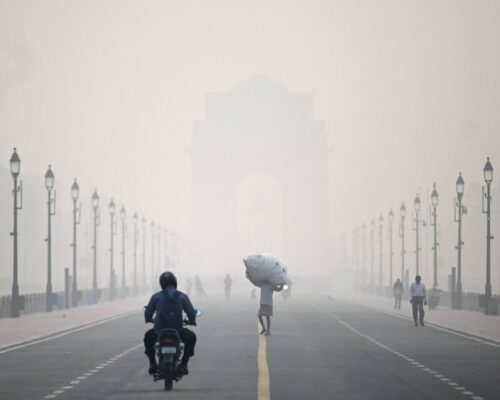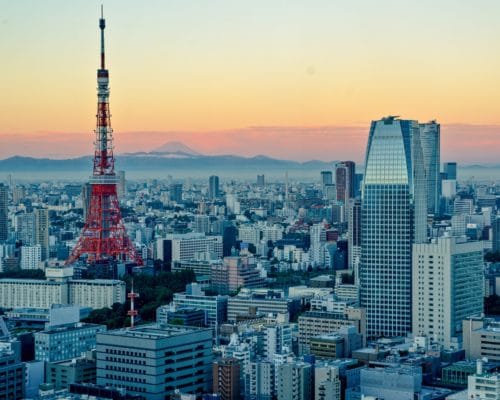Debunking Japan’s ‘Clean Coal Technology’ Claim
Photo by Rudmer Zwerver
23 December 2022 – by Heba Hashem Comments (0)
Japan may be one of the most technologically advanced nations in the world, but the country has lagged in climate action. Japan’s clean coal technology claim is making headlines. The Asia-Pacific country is currently the fifth-highest emitter of carbon dioxide (CO2) in the world, accounting for 2.88% of the global total.
Coal alone contributed to almost 40% of Japan’s CO2 emissions in 2021 and accounted for about one-third of the country’s electricity generation.
Why Does Japan Still Burn Coal – Coal Consumption in Japan
Japan has diversified its energy mix in recent years and has committed to achieving a 26% reduction in emissions by 2030. However, the country remains heavily dependent on polluting fossil fuels. In 2019, fossil fuels accounted for 88% of Japan’s total power generation. As a resource-poor nation, Japan also relies on imports to meet over 96% of its energy consumption needs.
Ever since the Fukushima nuclear disaster, which led to the shutdown of all nuclear power plants in Japan, the country has been increasing its dependence on fossil fuels. While many of its nuclear reactors remain unused, Japan has gradually replaced the lost energy from nuclear infrastructure with more coal-fired capacity.
Is There Such a Thing as Clean Coal and What Is Japan’s Role?
Coal is the largest source of global temperature rise. The fossil fuel is responsible for over 0.3 degrees Celsius of the 1-degree Celsius increase in global average temperatures.
Japan is particularly vulnerable to natural disasters because of its climate and topography. For example, it has experienced numerous earthquakes, typhoons and torrential rains. Meanwhile, it is also dealing with coastal erosion and sea level rise.
But, this hasn’t stopped the country from pursuing coal projects and funding similar projects overseas. While other industrialised nations are phasing out coal to reduce emissions, Japan continues to add new capacity. Despite announcing that it would phase out approximately 100 of the total 140 coal plants in the country, it continued to build more. Its latest project, a 1.07 GW coal-fired power plant, came online in mid-2022.
Clean Coal Technologies in Japan
At the same time, it said that it would build “clean coal” using advanced technologies to decarbonise electricity production. One of these technologies is ammonia co-firing, which is implemented at existing coal-fired power plants.
What Is Ammonia?
Ammonia is a compound of nitrogen and hydrogen. It can be used as a fuel in a direct combustion process. It can also be used in fuel cells as a hydrogen-energy carrier or for co-firing in coal combustion for power generation.
Direct combustion uses ammonia as a primary fuel source or additive in traditional fossil fuel combustion engines, gas turbines and furnace applications.
In practical application, combustion is difficult to achieve. This is because if ammonia is combusted with excess air, it is partially oxidised and forms nitrogen oxides (NOx) and nitrous oxide (N2O) as by-products. N2O emissions are equivalent to roughly 300 times the greenhouse gas effect of CO2 emissions. In order to achieve CO2 equivalent reductions, these gases must be minimised.
Is There a Motive To Keep Coal Plants Alive?
Japan has huge ambitions of including ammonia in its net-zero plans. It has, so far, promoted ammonia blending in coal-fired power plants as a viable solution for reducing CO2 emissions. However, these plans have been widely criticised as an attempt to extend the life span of coal plants.
The country’s trade and industry ministry has targeted an ammonia-coal co-firing rate of more than 50% by 2030. It plans to complete a demonstration project for an ammonia co-fired burner by the same year, before starting commercial installation.
Japan’s national R&D agency NEDO has assigned a domestic joint venture to carry out a four-year study. The venture will complete a demonstration project to co-fire 20% ammonia at a 1,000 MW coal-fired power plant by 2025.
Neither Cost-effective Nor Climate-effective
While Japan is eager to develop ammonia-coal co-firing as a decarbonisation tool, the technology has limited carbon-cutting potential, according to London-based climate data provider TransitionZero.
A 20% co-firing rate between ammonia and coal still releases double the emissions of a standard gas-fired combined-cycle power plant.
Japan’s more ambitious co-firing rate target of 50% by 2030 may bring emissions close to that of gas generation. However, the fossil fuel would also need to be ramped down by 2035 to be in line with the IEA’s Net Zero Emissions scenario.
Ammonia co-firing in coal plants is also expensive. Grey ammonia, which is the cheapest source of ammonia, currently costs around four times that of thermal coal. The cost gap is even wider with green ammonia, which is 15 times the cost of coal.
Moreover, the production of ammonia itself is carbon intensive. Globally, 98% of ammonia plants use fossil fuels as a feedstock, primarily natural gas (72%). The lack of cheap gas in Japan as a feedstock makes domestically produced ammonia costly. It means Japanese utilities would have to rely on cheaper imports, which would increase the country’s energy insecurity.
Furthermore, the retrofitting of existing engines in coal-fired power plants to support ammonia combustion contributes to higher capital costs.
Japan already plans to spend as much as USD 242 million on subsidising two demonstration projects using this technology. The projects aim to burn 50% ammonia with coal by 2029 and will cost a total of USD 392 million.
A Better Use for Funds: Zero-carbon Technologies
The country could divert the funds towards cleaner energy sources like renewables.
Japan currently generates 21% of its electricity from renewable energy, up from 12% in 2014. However, this is much lower than what other G7 countries have achieved. Germany’s renewables share, for example, has reached 49%, with the UK’s share at 39.7% and Italy’s share at 36%.
The city of Tokyo recently took a positive step when it mandated solar panels for all new houses starting in April 2025. City authorities intend to subsidise these systems, a decision that will require substantial investment from the government. The subsidies include the guaranteed purchase of solar power from homeowners at a premium for the first 10 years.
What Other Countries Are Trying to Use ‘Clean Coal Technology?‘
While Japan has been actively pushing for ammonia-coal co-firing, other countries are pursuing a similar strategy. South Korea, India and Chile have all started evaluating the use of ammonia in coal-fired power plants.
Most concerning are Japan’s ongoing efforts to export its approach to India and Southeast Asian countries, including Indonesia and Malaysia.
Risk of Stranded Assets
Due to the various challenges associated with ammonia-coal co-firing, continuing on this path will considerably undermine Japan’s climate ambitions.
Not only that, but the country could may end up locking itself into obsolete technologies that remain high cost. As renewables become more feasible and cheaper, investments in “clean coal” could very well become stranded assets.
This article is available in Japanese language on Energy Tracker Japan.


